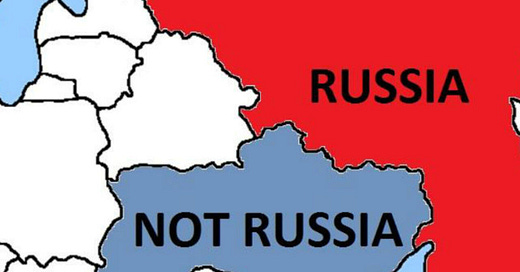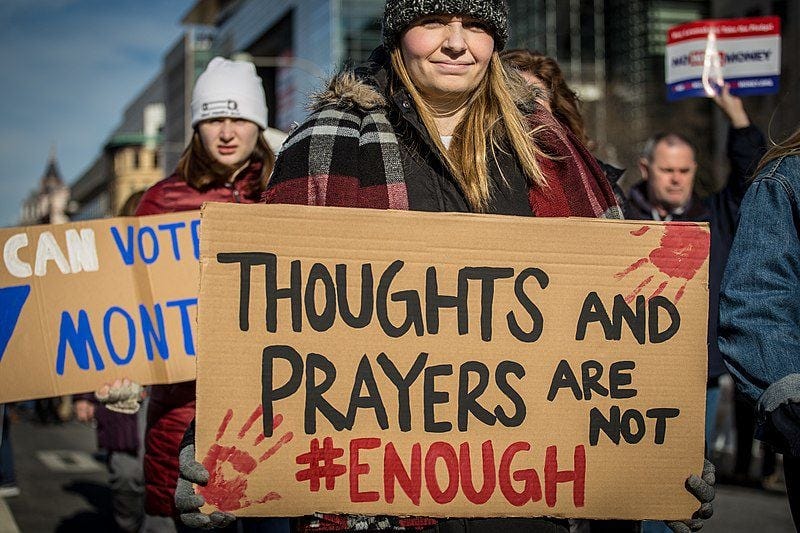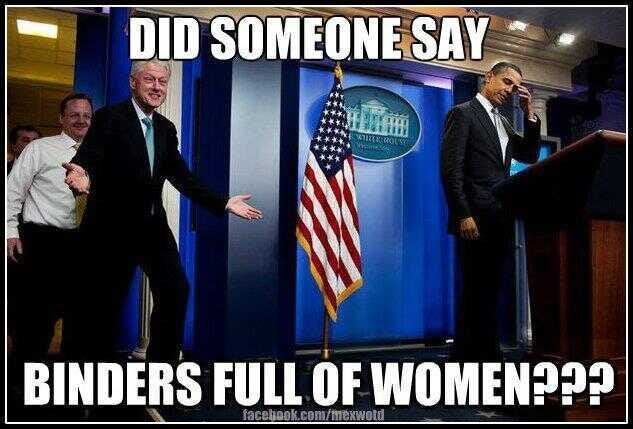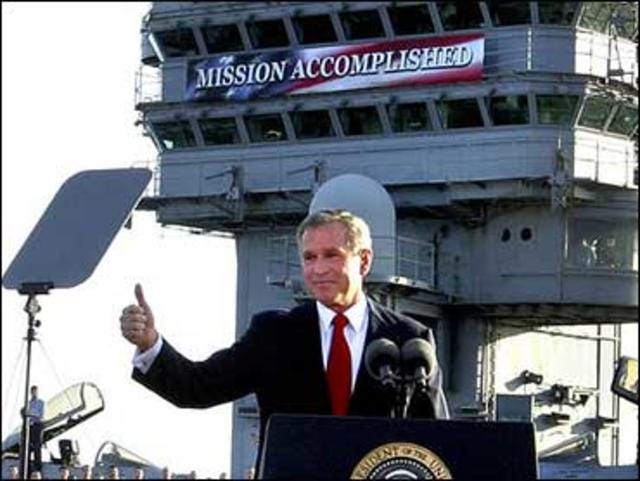Diplomacy in the Meme Age: When Soft Power Gets a Sense of Humor
When Diplomats Speak in Code: Euphemisms, Memes, and Strategic Ambiguity
TL;DR:
Diplomatic Language Evolves – Traditional euphemisms like "robust discussions" or "constructive dialogue" have long softened political tensions, but digital communication has introduced memes as a new tool in diplomatic discourse.
Euphemisms Maintain Tact – Phrases like "regrettable misunderstanding" or "peaceful coexistence" help avoid direct confrontation, preserving diplomatic decorum while sometimes obscuring reality.
Memes as Public Diplomacy – Governments and diplomats use memes to engage younger audiences, simplify complex geopolitical messages, and shape public perception through humor and satire.
Risk of Misinterpretation – While memes can make diplomacy relatable, they can also backfire due to cultural misunderstandings, differing interpretations, or trivializing serious issues.
Notable Examples
Russia’s Salisbury Incident Meme (2018) – Used humor to deflect criticism over Skripal poisoning.
Canada’s Crimea Tweet – A meme critiquing Russia’s narrative went viral, spreading diplomatic messaging.
"Mission Accomplished" (2003) – Bush’s phrase became a meme, symbolizing premature declarations of success.
The Double-Edged Sword – Diplomatic language, whether through euphemisms or memes, can de-escalate tension or cause diplomatic blunders depending on context and audience reception.
Cultural Literacy is Key – Diplomats must balance tradition with digital engagement, ensuring messages resonate globally without sparking unintended controversies.
Diplomacy in the Digital Age – As memes and social media reshape international communication, effective diplomacy requires mastering both formal rhetoric and the nuances of internet culture.
And now the Deep Dive…
Introduction
In the intricate dance of international diplomacy, language plays a pivotal role, often cloaked in layers of euphemism and, more recently, the universal language of memes. A notable recent example was when the Russian Embassy in London tweeted a sarcastic meme about the Salisbury incident in 2018, using humor to deflect criticism over the Skripal poisoning. This incident underscores the evolution in diplomatic discourse where traditional euphemisms like "robust discussions" or "constructive dialogue" are supplemented with more direct, and sometimes humorous, digital communication tools. The use of euphemisms in diplomacy serves multiple purposes, from softening potentially harsh statements to avoiding direct confrontation, thereby maintaining the facade of cordiality even during tense negotiations. However, the introduction of memes into this arena by diplomatic entities has added a layer of public engagement and cultural commentary that can either bridge gaps or widen them, depending on the audience's interpretation and cultural context.
Euphemisms have long been a staple in diplomatic language, acting as verbal cushions to navigate the sensitive landscape of international relations. For instance, phrases like "regrettable misunderstanding" or "diplomatic incident" could be used to describe what might otherwise be termed as espionage or aggressive policy moves. These linguistic devices allow diplomats to express dissent or disagreement without the risk of escalating conflicts. According to an article published by the University of Yerevan, euphemisms in diplomatic discourse are not just about politeness but are strategic in evading direct confrontation and maintaining diplomatic decorum. Meanwhile, the rise of memes as a tool in diplomacy reflects a shift towards more informal, yet impactful, ways of communicating public diplomacy. Memes offer a way to engage with a broader, often younger, audience, leveraging humor and cultural references to convey complex political messages in a digestible format. This was evident when the Canadian Mission to NATO used a humorous tweet during the Crimea crisis to critique Russia's narrative, which went viral and effectively communicated Canada's stance without the usual diplomatic jargon.
The integration of memes into diplomatic language has both expanded and complicated the field of public diplomacy. While memes can humanize diplomats and make their messages more relatable and shareable, they also carry the risk of misinterpretation due to cultural differences or language nuances. An analysis by the USC Center on Public Diplomacy explores how memes have emerged as a significant tool for cultural diplomacy, requiring a deep understanding of digital culture and audience engagement. Moreover, the strategic use of humor in diplomacy, as discussed by Diplomat Magazine, can either de-escalate tension or, if misjudged, lead to diplomatic faux pas. This dual-edged nature of modern diplomatic language illustrates the delicate balance diplomats must maintain between clarity and ambiguity, tradition and innovation, in an increasingly digital and interconnected world.
The Art of Diplomatic Euphemism
Euphemisms are linguistic tools that replace words or phrases which might be considered harsh, offensive, or direct with more palatable alternatives, often to obscure or soften the reality of a situation. In the realm of diplomacy, euphemisms serve multiple strategic functions: they facilitate communication by reducing potential friction, help in maintaining diplomatic decorum, and can subtly convey disagreement or policy positions without overt confrontation. For instance, the phrase "we regret to inform you" is often employed to express a strong disagreement or rejection in a manner that is less likely to provoke hostility. "Constructive engagement" might be used to describe negotiations that are potentially contentious, painting a picture of cooperation and progress. The phrase "we can neither confirm nor deny" has become a staple in diplomacy for maintaining ambiguity around sensitive information, particularly in intelligence matters, thereby preserving secrecy while not admitting to knowledge or involvement. Lastly, "thoughts and prayers" can function as a diplomatic euphemism where condolences are extended without committing to any concrete action or policy shift.
Diving deeper into the technical aspects of euphemism usage, these phrases are not just about politeness but are embedded within a broader strategic communication framework. According to linguistic studies, euphemisms in diplomacy can be analyzed through the lens of pragmatics, where the context of use significantly alters the meaning. They are a form of strategic ambiguity, allowing diplomats to navigate international waters where directness might be detrimental. This tactical use of language helps in managing expectations, controlling the narrative, and sometimes in delaying decisions or actions under the guise of continuing dialogue or contemplation.
The historical application of euphemisms in diplomacy offers a rich tapestry of examples where language has been used to either veil or misdirect public perception. One of the most notorious instances is President Nixon's use of "Peace with Honor" during the Vietnam War. This phrase was intended to assure the American public and international community of a noble and dignified end to the conflict, yet it has been frequently criticized for its misleading nature as peace did not ensue immediately, and honor was questioned. Similarly, during the Cold War, terms like "peaceful coexistence" were used by both superpowers to describe their relationship, which in reality was fraught with tension and proxy conflicts. Such phrases illustrate how euphemisms can be employed to craft a narrative that aligns with political objectives while often glossing over the complexities or harsh realities of geopolitical strategies.
In modern diplomacy, the role of euphemisms has evolved with the advent of digital communication and social media, where public diplomacy is conducted with an audience that is more informed and less forgiving of obfuscation. A study from the University of Yerevan highlights how contemporary diplomatic discourse involves a more nuanced use of euphemisms, adapting to the rapid information exchange environment where missteps can quickly become public scandals (Gevorgyan & Harutyunyan, 2023). The use of euphemisms in diplomatic tweets, press releases, or speeches now requires a balance between traditional diplomatic tact and the transparency demanded by public scrutiny, making the art of euphemism more challenging yet essential.
The strategic deployment of euphemisms in diplomacy is also critiqued for potentially undermining clear communication, which is vital for trust and effective policy-making in international relations. Scholars like those at the University of Dijon argue that while euphemisms can foster diplomatic relations by avoiding conflict, they might also perpetuate misunderstanding or skepticism among nations, especially when the discrepancies between the euphemistic language and actual policy outcomes become evident (Shapina, 2008). This duality in the use of euphemisms underscores the need for diplomats to be adept not only in the language of diplomacy but also in understanding the cultural, political, and emotional contexts in which they operate.
Memes in Modern Diplomacy
In the contemporary digital era, memes have transcended their origins as simple humorous images or videos to become a significant element in the toolkit of modern diplomacy. Memes, which are essentially cultural symbols or social ideas transmitted virally, have infiltrated diplomatic discourse primarily through social media platforms like X (formerly Twitter), Instagram, and TikTok. These platforms provide diplomats and foreign offices with a new medium to engage with global audiences, particularly the younger demographic, using humor to convey political messages or critique international policies. A prime example is the "Distracted Boyfriend" meme, adapted in diplomatic contexts to humorously depict nations or leaders being distracted by new alliances or policy shifts, thereby commenting on the fluidity of international relations without the burden of traditional diplomatic language.
One of the notable case studies in the use of memes by official diplomatic channels involves the U.S. State Department. During the 2012 U.S. presidential election, Mitt Romney's comment about "binders full of women" intended to highlight his approach to gender diversity in his administration became a meme that transcended domestic politics. This phrase was then humorously adopted in diplomatic circles to critique or highlight the often tokenistic approach to gender in politics or to comment on diversity in diplomatic appointments. Such memes serve not only as a form of political commentary but also as a means to engage with the public in a language they are familiar with, thereby humanizing the sometimes austere image of government officials and making diplomacy more accessible and relatable.
Memes have also made their mark during high-profile international summits, where moments of awkwardness or significant diplomatic interactions become ripe for memetic treatment. For instance, the G7 or ASEAN summits have been sources of numerous memes, particularly focusing on awkward handshakes, facial expressions, or photo ops that might suggest underlying tensions or camaraderie among leaders. An example is the 2017 G7 summit in Italy where a photograph of then-U.S. President Donald Trump appearing to push aside the Montenegrin Prime Minister Dusko Markovic to get to the front of a group photo became a meme, symbolizing perceived American unilateralism or disregard for allies. These memes provide a quick, visual shorthand for complex geopolitical dynamics, often capturing the public's attention more effectively than traditional media coverage.
The strategic use of memes in diplomacy can be seen as an extension of digital or public diplomacy, where the aim is to influence public opinion and engage with international citizens on a more personal level. According to research from the USC Center on Public Diplomacy, memes have become a tool for cultural diplomacy, requiring diplomats to be not just linguists but also cultural connoisseurs adept at navigating the digital culture (Mora, 2024). This involves understanding meme creation and dissemination, how they resonate with different cultures, and how they can be leveraged for diplomatic messaging without crossing the line into propaganda or cultural insensitivity.
However, the integration of memes into diplomatic strategies is not without its challenges. The humor and cultural references inherent in memes can be misinterpreted or misunderstood across different cultural contexts, leading to diplomatic faux pas or unintended escalations. Furthermore, the ephemeral nature of memes might trivialize serious diplomatic issues, as noted in discussions by scholars at the Lowy Institute, where the potential for memes to overshadow substantive policy discussions or lead to the oversimplification of complex international relations is a concern (Lowy, 2015). Thus, while memes offer a novel and engaging approach to diplomacy, they require careful handling to ensure they enhance rather than hinder diplomatic efforts.
The Double-Edged Sword of Diplomatic Language
In the intricate world of diplomacy, language serves as both a tool for peacebuilding and a potential source of conflict, embodying the notion of a double-edged sword. One of the positive aspects of diplomatic language is its ability to build bridges through humor or light-hearted expressions. By employing wit or jest, diplomats can de-escalate potentially explosive situations, creating an atmosphere where disagreement does not necessarily lead to discord. For instance, during the 2019 NATO summit, Canadian Prime Minister Justin Trudeau's light-hearted comments about U.S. President Donald Trump, although later seen as a faux pas, initially served to humanize the leaders and perhaps momentarily diffuse the tension of the summit. This approach can make diplomatic interactions more personable, fostering a sense of camaraderie that can facilitate negotiations.
Another beneficial facet of modern diplomatic language is its role in cultural exchange, particularly through the use of memes. Memes have become a medium of cultural diplomacy, engaging younger demographics who might not be reached through traditional diplomatic channels. They act as a form of soft power, conveying cultural nuances, shared values, or even political satire in a language that resonates with digital natives. The Canadian Mission to NATO, for example, used memes to comment on international events, thereby engaging a broader audience in discussions about policy and international relations. This tactic not only democratizes diplomacy but also encourages a cultural exchange that can lead to better international understanding and cooperation.
However, the use of humor, euphemisms, and memes in diplomacy is fraught with risks due to the vast potential for miscommunication. Cultural references inherent in memes or the subtle shades of meaning in euphemisms can be interpreted differently across various linguistic and cultural contexts. What might be seen as humorous in one culture could be perceived as offensive or confusing in another, leading to misunderstandings that could undermine diplomatic efforts. For instance, a meme used by the Russian Embassy in London regarding the Salisbury poisoning incident was interpreted by some as an admission of guilt rather than sarcasm, highlighting how cultural and linguistic nuances can lead to significant diplomatic missteps.
Moreover, diplomatic language, particularly when it involves humor or euphemism, can backfire, resulting in diplomatic blunders. The use of euphemistic language to avoid direct confrontation can sometimes mask true intentions, leading to a breakdown in trust or even escalation if the underlying message is perceived negatively. An example includes the 2003 incident where U.S. Secretary of State Colin Powell used the phrase "serious consequences" in reference to Iraq, which was seen by some as a euphemism for military action, contributing to international tension. Similarly, humor can be risky. When not universally understood or if it touches on sensitive subjects, it can lead to diplomatic incidents or sour international relations, as was potentially the case with Trudeau's comments at the NATO summit.
Navigating this double-edged sword requires diplomats to be highly skilled in cultural literacy, context awareness, and language nuance. The challenge lies in balancing the strategic use of language for positive engagement with the risks of cultural misinterpretation or unintended offence. Studies from the University of Oxford emphasize that while humor can soften diplomatic interactions, its misapplication can lead to significant setbacks in international relations (Landale, 2018). Thus, diplomats must continuously adapt and learn from both successful and failed instances of language use to refine their communication strategies in an increasingly globalized and digitally connected world.
Notable Phrases and Their Impact
In the realm of international diplomacy, certain phrases become more than just words; they evolve into cultural touchstones or memes that carry significant weight in shaping public perception and policy discourse. One such phrase is "A great day for Canada, and therefore, the world," uttered by Canadian Prime Minister Justin Trudeau during a town hall in 2016. This statement, intended to reflect national pride and optimism, transcended its initial context to become a meme, often used humorously or sarcastically to comment on Canada's role in global affairs or to mock the perceived self-importance of political statements. This transformation from a statement of national pride to a meme illustrates how diplomatic language can be reappropriated by the public, influencing how political figures and their policies are viewed.
When examining iconic quotes like Trudeau's, the impact on policy and public perception becomes a critical area of analysis. The phrase, while initially meant to boost national morale, sparked a range of interpretations, from admiration for Canadian leadership to criticism for perceived hubris. On social media platforms like X (formerly Twitter), the memeification of this quote led to a broader discourse on Canada's international standing, often juxtaposed with satirical content about global politics. This public engagement can influence policy indirectly by pressuring leaders to align their actions more closely with their rhetoric, or by shaping public expectations of Canada's role on the world stage.
Another notable phrase with a significant impact on public perception is former U.S. President George W. Bush's "Mission Accomplished" banner, displayed during his speech on the USS Abraham Lincoln in 2003, declaring the end of major combat operations in Iraq. This statement, and its accompanying imagery, became a point of contention and later a meme, symbolizing the disconnect between political declarations and the reality of ongoing conflict. The phrase has since been used to critique premature declarations of success in various contexts, affecting not only public trust in political leadership but also influencing policy debates regarding military engagement and strategic communication.
The transition of these phrases into public discourse also highlights the power of language in framing policy debates. When phrases become memes, they can serve as shorthand for complex policy issues, reducing nuanced discussions to memorable, often oversimplified, catchphrases. This can both facilitate public engagement by making policy discussions more accessible or distort them by oversimplifying the issues at stake. For instance, Trudeau's comment has been referenced in discussions about Canada's environmental policies, foreign aid, or its stance on international trade, often with a tone that questions the magnitude of Canada's influence on global issues.
The analysis of these phrases through the lens of memes provides insights into how modern digital culture affects diplomacy. Researchers like those at the University of Oxford have noted that the rapid spread of memes can accelerate the public's critique or endorsement of political actions, sometimes outpacing traditional media narratives (Landale, 2018). This phenomenon necessitates that diplomats and policy-makers consider not only the immediate impact of their words but also how they might be reinterpreted, reshaped, and rebroadcast by the public in digital spaces. As such, the strategic use of language in diplomacy must now account for this dynamic, where every statement holds the potential to become a part of the global cultural lexicon, impacting both policy and public perception in unforeseen ways.
Conclusion
The evolution of diplomatic language, from the carefully crafted euphemisms of traditional statecraft to the rapid-fire, culturally charged world of memes, reflects the shifting nature of global communication. Euphemisms have long served as a strategic tool for diplomats, allowing them to navigate sensitive discussions with ambiguity and tact. However, the rise of digital diplomacy, fueled by social media, has introduced a new dimension—one where humor, irony, and cultural references shape international discourse in ways that are both engaging and unpredictable.
Memes, while effective in broadening public engagement and humanizing diplomacy, also present challenges of misinterpretation, cultural misalignment, and potential diplomatic missteps. The double-edged nature of both euphemisms and memes underscores the delicate balance diplomats must strike between clarity and strategic ambiguity, tradition and innovation, discretion and engagement. As the digital world continues to shape global conversations, the ability to harness both traditional diplomatic rhetoric and modern cultural symbols will be essential for effective international relations. Ultimately, whether through carefully worded statements or viral online humor, diplomacy remains an art—one where language, in all its evolving forms, remains a powerful tool for shaping global narratives.
Sources:
Gevorgyan, A., & Harutyunyan, L. (2023). Euphemisms in modern diplomatic discourse. Foreign Languages in Higher Education, 27. http://pub.ysu.am/index.php/flhe/article/view/8306
Mora, S. (2024). Behind the memes: The public diplomacy tool of the moment. USC Center on Public Diplomacy. https://uscpublicdiplomacy.org/blog/behind-memes-public-diplomacy-tool-moment
Landale, J. (2018). Humour and diplomacy. Diplomat Magazine. https://diplomatmagazine.com/humour-and-diplomacy/
Bjola, C. (2018). When diplomats laugh: The role of humour in digital diplomacy. International Affairs Blog. https://medium.com/international-affairs-blog/when-diplomats-laugh-the-role-of-humour-in-digital-diplomacy-5f7c850b0c30
Melissen, J. (2018). Diplomacy has been 'weaponized' with memes, trolling, online polls. Euronews. https://www.euronews.com/2018/04/09/diplomacy-has-been-weaponized-with-memes-trolling-online-polls
Pamment, J. (2018). Diplomacy has been 'weaponized' with memes, trolling, online polls. NBC News. https://www.nbcnews.com/tech/security/diplomacy-has-been-weaponized-memes-trolling-online-polls-n863486
Manor, I. (2019). What is the role of humor in digital diplomacy? Digital Diplomacy Blog. https://digdipblog.com/2019/04/24/what-is-the-role-of-humor-in-digital-diplomacy/
Diplomacy.edu. (2001). Use of language in diplomacy. Diplo Resource. https://www.diplomacy.edu/resource/use-language-diplomacy/
Shapina, L.N. (2008). Euphemisms in social spheres of activity: Political correctness and "wooden language" (on the example of French). Bulletin of Adygeyan State University. Series 2: Philology and Art History, 1. http://journals.adygnet.ru/index.php/vestnik_phil/article/view/374
Vorobyeva, O.I. (2000). Political language: semantics, taxonomy, functions. Moscow State University. http://www.philol.msu.ru/~olga/Articles/PolLang.pdf
Dekhkonboy, N.O. (2021). Phraseological euphemisms in modern English. Problems of Science, 1. http://problems-of-science.ru/index.php/probsci/article/view/2021
Akramova, N. (2021). Euphemisms in the speech of politicians and diplomats in modern English. The American Journal of Social Science and Education Innovations, 3(11). https://theamericanjournals.com/index.php/tajssei/article/view/4900
McGee, G. (2016). Euphemisms in international diplomacy. Diplo Blog. https://www.diplomacy.edu/blog/euphemisms-international-diplomacy
Zabotkina, V.I. (1989). New vocabulary of modern English. Higher School. https://books.google.com/books?id=v79sAAAAMAAJ
Euphemism. (2001). Wikipedia. https://en.wikipedia.org/w/index.php?title=Euphemism&oldid=103966787
Lowy, J. (2015). Diplomats, trolls and memes. Lowy Institute. https://www.lowyinstitute.org/the-interpreter/diplomats-trolls-and-memes
Kampmark, B. (2019). The Diplomacy of Memes: From the G7 to Global Politics. CounterPunch. https://www.counterpunch.org/2019/06/03/the-diplomacy-of-memes-from-the-g7-to-global-politics/
Morozov, E. (2011). The Net Delusion: The Dark Side of Internet Freedom. PublicAffairs. https://books.google.com/books?id=8R0xDeI1nDsC








